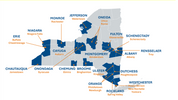The impact of the CARES Act, Title III, on Healthcare for Patients, Providers, and Facilities fighting COVID-19, includes the following:
1. Calls for the National Academies to evaluate the U.S. medical supply chain and our dependence on sources outside the U.S. for our medications and equipment, and use.
2. Details the Strategic National Stockpile of medical supplies needed to fight COVID-19, and provides for its replenishment, including personal protective equipment (PPE) for health care workers, testing supplies, medications and respirators.
3. Orders that any necessary items, services, and a future COVID-19 vaccination, must be rapidly covered by health plans and insurers 100% free of charge, within 15 days.
4. Orders all aspects of COVID-19 testing, including test administration charges must be 100% covered by all private health insurance companies, with no copayment or other form of cost-sharing, without negatively affecting enrollees in high deductible plans for tax purposes.
5. Mandates increased access to Medicare coverage of services for post-acute care.
6. Requires drug and device manufacturers making supplies critical to a national health emergency to report shortages of medical equipment to the FDA upon request from the DHHS.
7. Releases respirator manufacturers making respirators under these conditions from any future liability.
8. Calls for the FDA to prioritize and expedite applications for drugs to fight COVID-19, and drug manufacturers must insure a back-up supply to the U.S., maintain contingency plans, and answer as to the details of any interruption to supply.
9. Expands the list of providers that can prescribe home health services to include physician assistants and nurse practitioners.
10. Allocates $1.32 billion in additional funding to community health centers for testing and treating of COVID-19.
11. Renews telehealth promotion including Medicare coverage and funding of telehealth technologies, expands telehealth insurance coverage, rural telehealth access, especially for dialysis, home health care service, and hospice patients, and reauthorizes rural health care service programs.
12. Reauthorizes workforce training and education programs for health professionals, especially rural medicine, geriatric medicine, and nursing.
13. Allows BARDA (the Biomedical Advanced Research and Development Authority) to work with the private sector on research and development, and to prioritize diagnostics and vaccines, and promote innovation using competitive procedures for public health emergency efforts.
14. Changes Medicare and Medicaid reimbursement to health providers by adding measures through 2020 and for some, into 2021:
a. accelerating the time line for payments.
b. creating a 20% add-on payment for seeing patients in the inpatient setting.
c. increasing the weighting factor for coronavirus-diagnosed patients discharged during the emergency period.
d. expanding the definition of durable medical equipment (DME).
e. where labor costs are lower than the national average, the work components of physician fees are being increased.
f. expanding quality measure funding by an additional $20 million.
g. Medicaid disproportionate share reductions are being delayed through November, 2020.
h. Extending the Medicaid Demonstration Project on Community Mental Health Services for behavioral and substance abuse disorders through November, 2020.
15. Pre-empts state law and by limiting potential state and federal liability for volunteer health care professionals in the fight against COVID-19.
16. Relaxes certain HIPAA re-disclosure rules for substance use disorder patients, and provides that new HIPAA guidance shall be issued for COVID-19 treatment by the HHS Secretary in 6 months.
17. Allows funding for food to homebound seniors to be more easily transferred to state and local agencies.
18. Calls for the DHHS Secretary to launch a nationwide information campaign on the awareness of blood supply shortages in national emergencies.
19. Suspends collection of U.S. Department of Education student loans for 6 months.
20. Eases higher education emergency financial aid, funding, loan repayment, reporting and grant regulations during qualified emergencies, allows expanded institutional deferments, and expands ability of distance learning.
21. Eases admissions, qualifications and other requirements of the Higher Education Act to expand the health care workforce during a national health emergency.
22. Expands the amount employers may, but are not required to pay employees for paid public health emergency leave to between $200 per day and $10,000 aggregately per employee, and eases the rehire timelines to between 30-60 days prior to March 1, 2020.
23. Expands the minimums employers may, but are not required, to provide to employees on emergency paid sick leave to $511 per day and $5,110 aggregately for employees under local, state or federal quarantine, or isolation for symptoms, exposure or good and reasonable cause relating to COVID-19; $200 per day or $2,000 aggregately when employee is caring for an individual under the same conditions. It also provides advance refunding of payroll credits for required paid sick leave and required paid family leave.
24. Expands the definition of over-the-counter medical products as qualified medical expenses.
25. Allows pharmacies to fill and refill 90-day supplies of more Medicare covered medications during the health emergency.
26. Allows home and community-based services to be performed in the acute setting.
27. Disregards the income of a spouse when calculating an individual’s eligibility for medical assistance, and delays reductions and cuts through December 1, 2020.
28. Incentivizes drug manufacturers to develop over-the-counter drugs as opposed to prescription drugs by giving them an 18-month market exclusivity period and amending federal law to allow the FDA faster notice and comment periods, while maintaining its prohibition on misbranded drugs that do not confirm to their OTC monographs.
29. Provides a procedure for annual re-evaluation of the safety and efficacy of OTC cough and cold products for children under the age of 6.
30. Clarifies finer details of the Families First Coronavirus Response Act enacted last week to remove inconsistencies.
COVID-19 CARES Act By the Numbers:
CDC: $4.3 billion
Community Health Centers: $1.32 billion
FDA New Drugs: $80 million
Hospitals: $100 billion for hospitals responding to the coronavirus.
Medicine and supplies: $16 billion to the Strategic National Stockpile
Testing & Treatment: $11 billion
Veterans' health care: $20 billion
"While this legislation is an important first step forward, more will need to be done to deal with the unprecedented challenge of this virus."
 unknownx500
unknownx500










